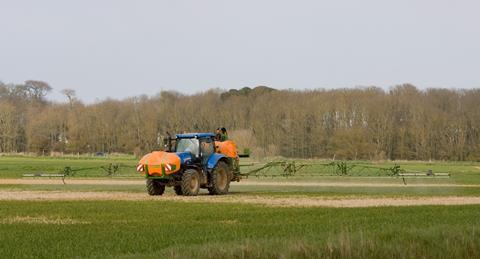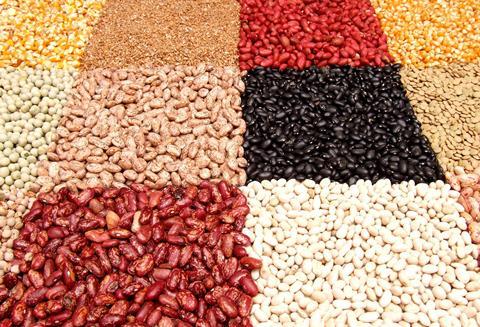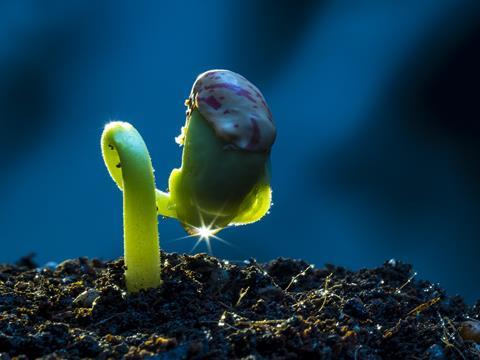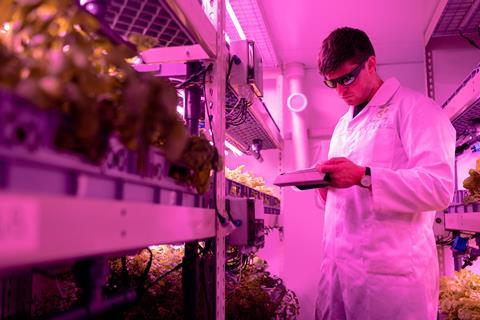Nitrogen-fixing has been researched for decades. It is an attempt to make agriculture greener and more productive. Advances suggest it is entering a new era of productivity and precision with the help of cross-sector insights. Discover developments in biological nitrogen fixation technology and research, as sustainable agriculture becomes a hot topic.
Exploring biological nitrogen fixation (BNF)
Agriculture has used nitrogen-based fertilizers for a long time, degrading ecosystems in the process by oversupplying soil with the element. Many species are not robust against high nitrogen concentrations, which permits particular species to outperform others.
Fragile flora, like fungi, fail in the face of excessive synthetic fertilizers. Their absence damages crop yields and soil health because they provide nutrients and align pH. The agricultural damage, besides that caused by nitrogen, is one of the most focal elements in advancing climate change. It is 300 times more damaging to the atmosphere than the more infamous carbon dioxide, meaning farmers must do as much as possible to move away from it.
Environmental experts are researching the power of BNF as an alternative to promote sustainable agriculture. Plants leverage nitrogen in the soil but cannot take advantage of gaseous pockets in the atmosphere. The chemical and biological process repurposes atmospheric nitrogen, distributing it to plants as ammonia or nitrate.
Some plants — like legumes — can house and utilize ammonia from BNF, while others are incapable. Synergistic potential relies on plant genotype, among other environmental factors like soil health and climate.

Why farmers need BNF research
BNF can help farmers diversify nitrogen sources for their fields. It eliminates the need for chemical fertilizers, thereby reducing expenses. Revenues amplify from more fertile soil, producing higher yields by introducing applicable plants to optimized bacteria, like rhizobia. As the bacteria invades plant nodules, a trade relationship forms. The rhizobia provides nitrogen while the plant trades it with its carbon.
The correct setup also feeds other plants with nitrogen, such as cereals. It allows primed plants to transfer excess nitrogen stores to other areas without having to monitor the nitrogen-fixing bacteria in too many places.
For many years, molecular scientists were uncertain how the environment would react after designing a BNF system in an agricultural setting. The sheer variety and scope of farmland worldwide made it a challenge to specify. Monitoring individual microorganisms and their effectiveness was another hurdle for continued BNF research. Other considerations include the cost-effectiveness of this strategy in areas with socio-economic concerns.
Intensified, curated testing is required to scale BNF technologies. Access and consistency will deliver green solutions and financial boons to farms worldwide.

Diving into novel research
Legumes are the most prominent player in BNF studies. Analyses discovered some legumes have nodules with particular nodule-specific cysteine-rich peptides. The discovery was monumental for determining why some legumes are effective with BNF integration and others are not. Plants without the NCF peptides discriminate against rhizobial strains, rendering the installation moot.
It is essential to avoid stopgaps like this to propel research in sustainable agriculture, especially in fields like BNF that have been going on for at least 50 years. Due to political divides and inconsistent funding, finding quick, diverse solutions is required. For example, exploring the BNF world outside of legumes into non-fixing microorganisms is key to making it market-viable and scalable.
The inconsistency orders microbiologists to discover ways to bioengineer more plants to be BNF-compatible. Researchers began testing nodule competitiveness and how this correlates with successful inoculation of rhizobia, also called biofertilizers. Native rhizobia are almost always stronger than biofertilizers, presenting another barrier against artificial nitrogen production.
However, using native strains with inherent nitrogen-fixation traits as a foundation for biofertilizers proves effective. The knowledge removes the guesswork from BNF inoculation and paves the way for scientists to breed and cultivate region- and plant-specific strains. The strategy is crucial for pinnacle effectiveness in specific environments.

Strategies for identifying progress
Modern research on rhizobia inoculation relies on advanced sequencing and imaging to streamline BNF advancement. Additionally, diverse academic viewpoints are required to comprehensively understand how BNF impacts sustainable agriculture. What innovative technologies is each field using to uncover more secrets about nitrogen-fixing?
Microbiology
Microbiologists are critical for detailing the relationships of nitrogen-fixing bacteria with soil microbes and environmental conditions. Testing nitrogen-fixing from their point of view requires various microbial applications, like isolation, community analysis, characterization and microscopy.
For example, microbiologists employed fluorescence microscopy to examine the roots and leaves of inoculated plants versus a control group. Here are a few findings only they could have uncovered:
- Additional tech, such as specialized spectrometry, was necessary to localize sites present with bacteria.
- Inoculation altered plant metabolisms.
- Varied strains may produce defensive reactions from plants, altering where they travel.
Genetics
Geneticists are here to connect the dots between host plants and rhizome strains. Their compositions explain why their symbiosis is, or is not, practical. Are there ways to manipulate sequences to make plants more aligned or is this not the route to undergo? This is why genomic insight is so valuable.
Genome sequencing is a popular strategy sparking ideas like performing phylogenetic analysis of specific genes in curated environments. Researchers isolated a low-nitrogen strain and discovered it had BNF potential at 70 degrees Celsius, expanding options for what microbes were accessible for sustainable agriculture.

Data analytics
Data analytics encompasses countless specialties, from machine learning experts to database scientists. Research is only helpful with data. Copious amounts of data flow from each study, which needs oversight and maintenance. Data analysts are responsible for connecting the dots between seemingly disparate numbers. Within incomprehensibly large data sets, how can they visualize microbial connections and patterns to optimize BNF applications?
Analysts leverage machine learning models and big data to draw determinations from studies. Combining their guidance with geneticists produced cost-effective, expedited methods for identifying what species are in the rhizosphere regardless of how concentrated the populations are. Tools included bioinformatics and biostatistics. It is an extraordinary technology, as zeroing in on microbes for analysis was challenging within the sector.
Ecology
Environmental scientists and ecologists bring a more holistic approach to even microbiologists. They understand climate change, weather patterns, temperatures, how it impacts microbe-host interactions, and more. Agricultural settings are so customized it is as if they are their own biome. Ecologists perform in-depth soil tests to analyze the nutritional value, guiding inoculation design and trails.
Ecologists take soil analysis results to see how the environment impacts microbial performance. Additionally, remote sensing gathers nitrogen levels and fluctuations in live field studies on barley, wheat, and rye as actively growing microbiomes form. The immediate observations permit more nuanced perspectives on crop productivity against historical data of conventionally nitrogen-fertilized plants.
Climate change consultants
Eliminating harmful nitrogen fertilizers to promote sustainable agriculture is only possible with sustainability experts’ tips. The goal is to create a technology to replace an end-user product, but every step farmers, chemists, and biologists take to use nitrogen-fixing must meet climate-friendly protocol.
Professionals in climate change may perform life cycle analyses of necessary tools to assess the long-term functionality of inoculation. How much waste does it produce, and how much water and resources does testing need? Genuine decarbonization and climate awareness consider the process alongside the result.

Economics
Getting the strains to meld with the plants is the most important objective. However, if it does not mesh with practical agricultural economics, then the efforts are fruitless in more ways than one.
What are the cost-benefit analyses of creating rhizobial inoculants, and how does this compare with sustainability reporting?
A Brazilian review proved BNF saved 183 million megagrams of carbon emissions and the equivalent of $15.2 billion compared to nitrogen fertilizer between 2019 and 2020. These are the numbers agriculturalists need to see.
Agricultural economists advise researchers based on market analysis. BNF must compete with traditional fertilizers because a commitment to sustainable agriculture is not enough motivation for some operations. While BNF techniques must be cost-competitive, they must also provide more financial advantages to farmers. Adopting a new procedure on farms is a time- and financial investment in and of itself, so the returns must be noteworthy.
Agronomy
Having experts in labs is the ideal environment for testing in sterile conditions without worrying about external influences. Eventually, field trials need to be performed with the help of experienced agronomists who can explain why testing results vary from application and practice. They are the go-to authority on yield assessments, verifying if the inoculations provided enough of an alteration in crop performance for the effort.
Agronomist input would be critical for determining how well rhizobial strains adapt to different climatic conditions. What if there are drought or agricultural resource management shifts? A study on pigeon peas in India identified their sustainable agricultural potential in unique agroclimatic regions when primed for nitrogen fixation.
Will studies make agriculture more eco-friendly?
It is not just one research team — countless individuals from all disciplines are engaging in this revolution to drive greener farming practices. Engaging with their chosen sector’s top tech expands the potential of these assets into climate-friendly realms.
The collaboration is quintessential for unlocking how BNF strategies can influence farms internationally for an accessible cost and installation. It could be one of the many solutions for achieving the UN Sustainable Development Goals, accenting zero hunger and responsible consumption and production.








No comments yet